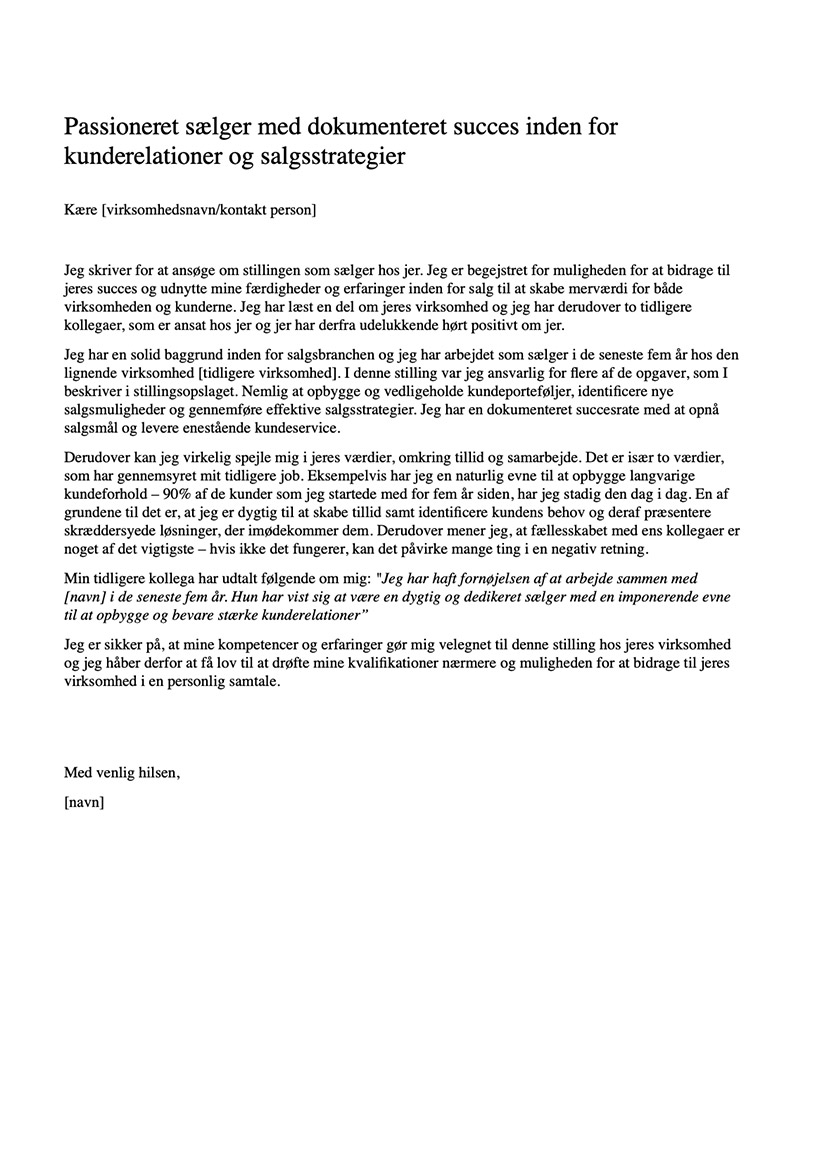Your browser (Safari 1.0) is more than 3 years old.
We recommend that you upgrade to the latest version. Otherwise we cannot guarantee that all functionality on Jobindex will work correctly.

How to create your CV – a complete guide
A CV is often the first thing companies read when they receive applications for a vacant position. In other words, your CV is where you can show the company what you can do and how your experience is relevant to the job.

Your CV should give a potential employer a quick and simple overview of your experience, education and skills. The employer is likely to skim your CV in the first instance, so you need to be sharp and focused in your writing and provide a simple overview of the content.
We make it easy for you
Structuring your CV can be tricky – in our Q&A you will get all the best CV tips. Learn more about what a CV looks like, what it typically contains and what it should be able to do. However, here are 3 good tips you can take away with you:
- Create a rough CV: This is a draft with all your general information. When you apply for a specific job, you should sort, highlight and possibly elaborate on the information and experience that is important for that particular job.
- Tailor your CV to the specific job you are applying for. Employers are interested in seeing a CV that shows you have thought about how you suit the role.
- Structure your CV in reverse chronological order, listing your most recent work experience and education first. A CV is typically 1–4 pages long.
Get all the good tips for your CV
A CV describes what you have done and achieved in previous jobs and through your education. A CV is retrospective and describes what you have done.
A cover letter, on the other hand, is forward-looking, as it describes how you could utilise your skills and experience in the new position. Also check out our guide toa great cover letter here..
Your CV should focus on the most important things you have achieved. And you can elaborate on this in the cover letter itself.
The easiest way to create a CV is to use a Word template. Or you can create a CV here on Jobindex and then print it out.
Create your CV here – for free..
Your CV should be in reverse chronological order, meaning you should start with your most recent achievements first. This applies to work experience and education.
However, no rule is without exception. If you are a recent graduate, you can start with your education and then work experience.
REMEMBER to include start and end dates for previous employment and education.
Also, make your CV easy to read by using headings, appropriately sized letters and not too much text. You can use bullet points, and remember that your CV should be a minimum of 2–3 pages.
A CV should be structured in reverse chronological order, and as a recent graduate you may have been working alongside your studies.
However, when you are a recent graduate looking for your first “real” job, it is your education that matters most. Therefore, you should start by outlining your education and then your work experience.
Of course, it depends on your experience. However, unlike a cover letter, a CV can be longer and is typically 1–4 pages.
It is important that your CV is easy to read. You can achieve this by using multiple headings, appropriately sized letters and by using bullet points.
The sections (and headings) that your CV should include are:
A brief introduction:
Start with an introduction, where you introduce yourself and your profile in 5–10 lines. Focus on what is relevant to the particular job you are applying for.
Work experience:
Under each position, you can summarise your most important and relevant tasks in bullet points. Elaborate on your achievements and tasks in relation to the position you are applying for. In general, it’s a good idea to incorporate the tasks described in the job advert if you have experience with them.
Focus on how your experience could be utilised in the role. In this way, the company can see that your CV is not generic and that you are genuinely interested in the position.
Education:
Write the most relevant things about your education. Here you can list the most important subjects and the results you have achieved. Describe what is relevant to the position.
Relevant courses:
Briefly mention the courses you have taken that may be relevant to the position.
IT skills:
Outline your IT skills if they are relevant to the job.
Your language skills
Describe your level of fluency in relevant languages.
References:
List any references who the company can contact.
Other relevant points:
Add anything else that might be relevant at the end.
Some managers and recruitment consultants only want to see a CV. If this is the case, you may want to create a motivational CV. Here you can elaborate on your CV and include some of the content you would otherwise include in your cover letter.
Do you need inspiration for your cover letter or motivational CV? Click here for our guide to writing a great cover letter.
Download our CV template here
You can also download our CV template to get you started.




